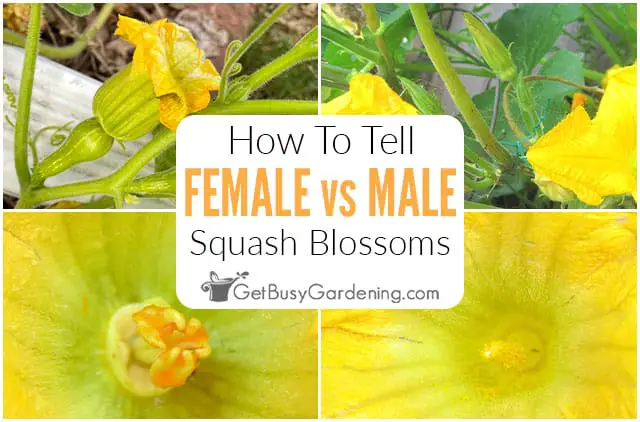In this article, you will learn a simple yet essential gardening skill: identifying male and female zucchini flowers. Whether you’re an experienced gardener or just starting out, understanding the difference between these two types of flowers is crucial for a successful harvest. By the end of this article, you’ll be equipped with the knowledge to confidently distinguish between male and female zucchini flowers, allowing you to optimize pollination and ultimately increase your zucchini yield. So, let’s dive in and unlock the secrets of nature’s gender in the zucchini world!
Identifying Male and Female Zucchini Flowers
If you’re a keen gardener or simply someone who enjoys growing your own food, identifying male and female zucchini flowers is an important skill to have. Understanding the differences between these two types of flowers can greatly benefit your gardening efforts, as it allows you to effectively pollinate the plants and ensure a bountiful harvest. In this article, we will explore the physical characteristics that distinguish male and female zucchini flowers, providing you with the knowledge to easily identify them when you’re out in the garden.
Physical Differences Between Male and Female Zucchini Flowers
Male and female zucchini flowers may look similar at first glance, but upon closer inspection, several distinguishing features become apparent. These differences include the blooming time, shape and size, stem length, presence of pistils and stamen, as well as coloration and scent. By understanding these characteristics, you can confidently identify male and female zucchini flowers with ease.
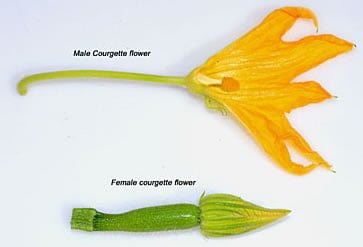
Male Zucchini Flowers
Male zucchini flowers are the first to appear on the plant, usually preceding the female flowers by a few days. They are lighter and more delicate in appearance compared to the female flowers. One telltale sign of a male flower is the absence of a zucchini fruit at its base. Male flowers tend to have longer stems and are often found in clusters. They play a vital role in the pollination process since they contain the stamen, which produces the pollen necessary for fertilization.
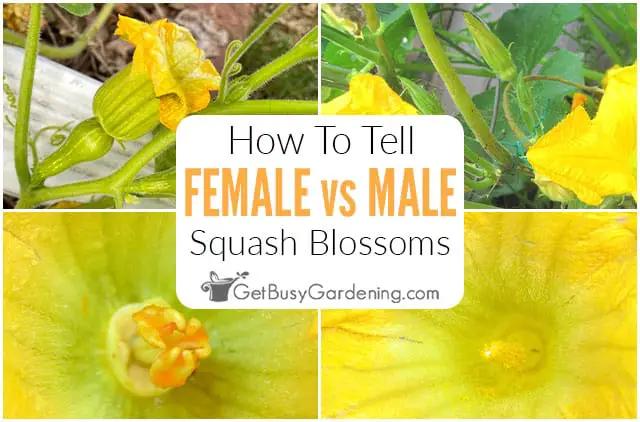
Female Zucchini Flowers
Unlike male flowers, female zucchini flowers possess a miniature zucchini fruit at the base. These flowers tend to have shorter stems and are typically found closer to the center of the plant. The presence of a bulbous structure at the base, resembling an emerging zucchini, is a clear indication of a female flower. The female flowers contain the pistils, which are responsible for receiving and fertilizing the pollen from the male flowers.
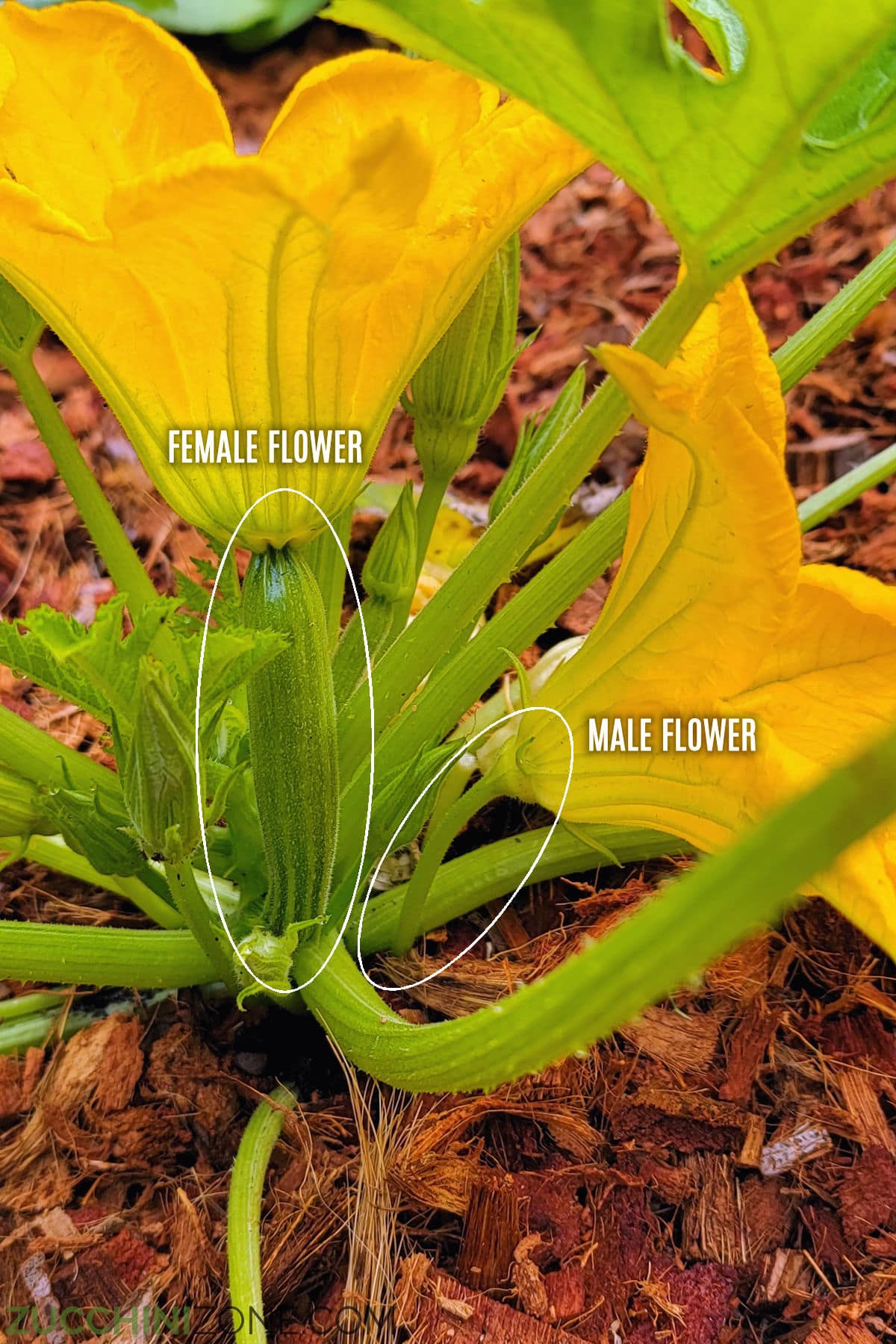
Distinguishing Features of Male and Female Zucchini Flowers
When it comes to distinguishing male and female zucchini flowers, certain features stand out. By paying attention to the following characteristics, you can easily identify each type of flower:
Blooming Time
As mentioned earlier, male zucchini flowers tend to bloom before the female flowers. This difference in timing can be crucial when it comes to hand-pollinating your plants or introducing beneficial insects to the garden. By recognizing the blooming patterns, you can ensure the efficient transfer of pollen.
Shape and Size
Male and female zucchini flowers also differ in terms of shape and size. Male flowers are usually more elongated and narrower, while female flowers tend to be slightly shorter and plumper. Observing these physical characteristics can help you determine the gender of the flowers.
Stem Length
The length of the stem can provide a clue about the flower’s gender. Male zucchini flowers typically have longer, slender stems, which allow them to extend further away from the plant’s foliage. Female flowers, on the other hand, possess shorter stems that keep them closer to the center of the plant.
Pistils and Stamen
The presence or absence of pistils and stamen is perhaps the most reliable method of identifying male and female zucchini flowers. Male flowers exclusively have stamens, while female flowers possess pistils. These reproductive structures can be easily located in the center of the flower, and their presence or absence determines the gender of the flower.
Coloration and Scent
While not always a foolproof method, coloration and scent can provide additional clues to identify male and female zucchini flowers. Male flowers often have brighter and more vibrant colors, such as yellow or orange, whereas female flowers may appear slightly paler. Additionally, some gardeners claim that female flowers emit a subtle sweet scent, which can help in differentiation.
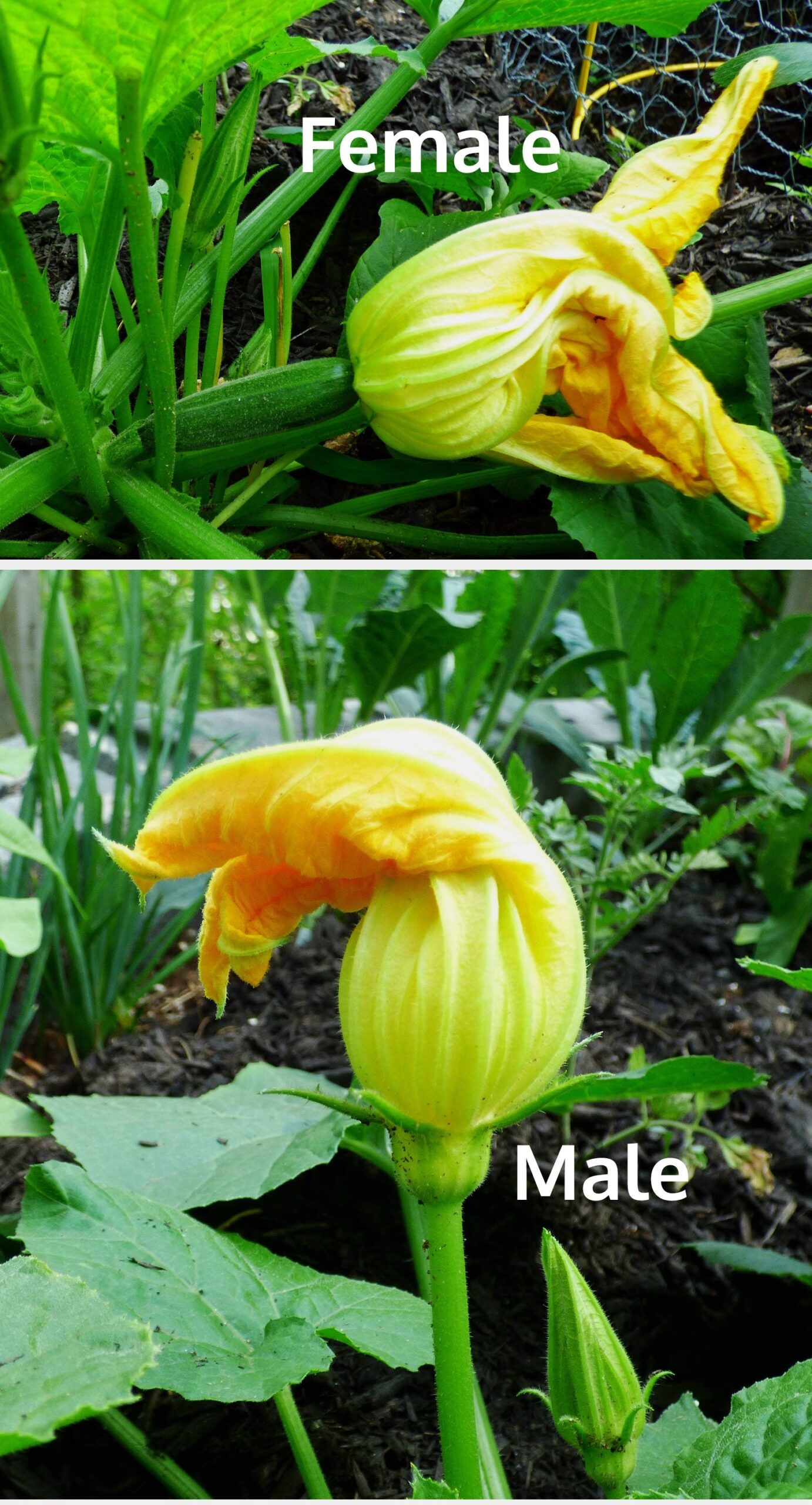
Identifying Male and Female Zucchini Flowers at a Glance
In summary, distinguishing between male and female zucchini flowers comes down to careful observation of blooming time, shape and size, stem length, the presence of pistils and stamen, as well as coloration and scent. By familiarizing yourself with these characteristics and paying close attention to your plants, you can confidently identify the gender of zucchini flowers in no time.
Knowing the difference between male and female zucchini flowers enables you to take necessary steps to ensure successful pollination and a plentiful harvest. Whether you prefer to hand-pollinate or rely on natural methods, this knowledge will empower you to make informed decisions and enhance your gardening experience. So, the next time you’re out in the garden, take a closer look at your zucchini plants and discover the wonders hidden within their beautiful flowers.

